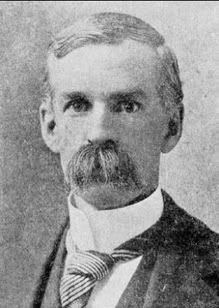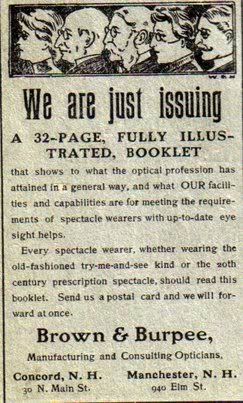THE WOODRANGER
A STORY OF THE PIONEERS OF THE DEBATABLE GROUNDS

G. WALDO BROWNE
AUTHOR OF
"TWO AMERICAN BOYS IN HAWAII," ETC.
NEW YORK
A. WESSELS COMPANY
1907
Copyright, BY L. C. PAGE AND COMPANY
(Incorporated) All rights reserved
TO
Norman Stanley Browne
My merry little son hoping it will interest and instruct him this volume is most affectionately inscribed.
Edited by Nick Head Copyright 2005

CONTENTS.
INTRODUCTION ...... 7
I. THE DEER'S LEAP . . . . .11
II. THE WOODRANGER AND THE DEER REEVE.... 16
III. NORMAN MEETS HIS ENEMY ... 23
IV. A PERILOUS PREDICAMENT ... 30
V. JOHNNY STARK ...... 43
VI. THE MAN WHO KNEW IT ALL . . 53
VII. NORMAN'S TRIAL ..... 63
VIII. END OF THE TRIAL ..... 75
IX. THE SHOOTING-MATCH .... 84
X. AN ALARM ....... 97
XI. A FIERY GIRDLE ..... 103
XII. BAD NEWS AT HOME . . . .112
XIII. THE HONOUR OF THE McNIELS . .119
XIV. NORMAN WORKS IN A STUMP-FIELD . 126
XV. HANGING A BEAR ..... 139
XVI. GUNWAD TAKES DECISIVE ACTION . . 149
XVII. THE CANOE MATCH ..... 163
XVIII. THE FALL HUNT ..... 180
XIX. DEER NECK ...... 188
XX. THE CRY FOR HELP ..... 196
XXI. A PECULIAR PREDICAMENT 202
XXII. THE GUN-SHOT ...... 209
XXIII. THE FOREST TRAGEDY .... 215
XXIV. BEAR'S CLAWS — THE TURKEY TRAIN ...221
XXV. THE PLACE OF THE BIG BUCK... 229
XXVI. AROUND THE CAMP-FIRE .... 234
XXVII. "CREEPING" THE MOOSE . 242
XXVIII. THE BATTLE OF THE MONARCHS.... 250
XXIX. TEST SHOTS — THE SNOW-STORM... 255
XXX. THE BURNING OF CHRISTO'S WIGWAM.... 262
XXXI. THE WOODRANGER SURPRISES MR. MACDONALD ......270
XXXII. ZACK BITLOCK'S DEER . 278
XXXIII. RAISING THE MEETING-HOUSE . 286
XXXIV. THE FRESHET ...... 294
XXXV. THE WOODRANGER'S SECRET . 300
XXXVI. THE TURNING OF THE TIDE . 308
INTRODUCTION.
In order to understand the scenes about to be described, it is necessary to take a hasty glance at the general situation in 1740 of the colonists in the vicinity of the Merrimack River. It should be borne in mind that New England was only a narrow strip of country along the seacoast, and was divided into four provinces, — Rhode Island, Connecticut, Massachusetts, and New Hampshire.
Unfortunately for the welfare of the pioneers in the last-named province, the boundary line between New Hampshire and Massachusetts was a matter of dispute for nearly a hundred years. The difference had arisen from a misconception at the outset in regard to the source of the Merrimack River, which was believed by its early discoverers and explorers to rise in the
west and follow an easterly course to the ocean. Accordingly, the province of Massachusetts claimed not only all of the land to the southwest of the other province, but a strip three miles
wide along the east bank of the stream to its supposed source in the great lake (Winnepesaukee), including not only the debatable ground of Namaske, but a tract of country to its south and east,
called the " Chestnut Country," on account of the large number of those trees growing there.
In 1719 a part of this territory was settled by a party of colonists from the north of Ireland, known as Scotch-Irish, from their having previously emigrated to that country from Scotland.
These settlers, who called their new town first Nutfield and then Londonderry, in honour of the county from whence they had come, supposed that the deeds and grants which they had received from the province of New Hampshire would allow them to hold the debatable ground. They were upright, courageous men and women, but were rigid Presbyterians, and for this reason met with little favour from their equally austere Puritan neighbours from Massachusetts.
In order to colonise the disputed territory, Massachusetts at about this time began a system of granting lands as a reward for meritorious service in fighting the Indians, and among others
was a grant to the survivors of the famous " Snow Shoe Expedition " of the tract of land below Namaske Falls, which had gained the disreputable name of Old Harrytown. The leader of the
expedition, Captain Tyng, was dead, but in honour of him the new town was named Tyng Township.
In one respect the settlers of Tyng Township were fortunate. They arrived during one of those transitory intervals of comparative peace, which came and went during the long and sanguinary struggle with the Indians like flashes of sunlight on a stormy clay. In 1725, following several victories of the whites over their savage enemies, foremost of which was Lovewell's fight, the chief of the Abnaki Indians, then the leading tribe in New England, signed a treaty of peace at
Boston. This treaty was not broken until 1744, and the whole history of Tyng Township is included within these two dates.
As stated above, some of the Scotch-Irish, under grants from New Hampshire, had already settled in the territory granted by Massachusetts to Tyng's men, and an intense rivalry at once
sprang up between the settlements. The English were determined and aggressive, the Scotch stubborn and ready to fight to the bitter end for what they considered their rights, and before
long both sides were ready to resort to arms the moment an overt act of their rivals should seem to call for such measures.
G. WALDO BROWNE.
Back to top
A STORY OF THE PIONEERS OF THE DEBATABLE GROUNDS

G. WALDO BROWNE
AUTHOR OF
"TWO AMERICAN BOYS IN HAWAII," ETC.
NEW YORK
A. WESSELS COMPANY
1907
Copyright, BY L. C. PAGE AND COMPANY
(Incorporated) All rights reserved
TO
Norman Stanley Browne
My merry little son hoping it will interest and instruct him this volume is most affectionately inscribed.
Edited by Nick Head Copyright 2005

CONTENTS.
INTRODUCTION ...... 7
I. THE DEER'S LEAP . . . . .11
II. THE WOODRANGER AND THE DEER REEVE.... 16
III. NORMAN MEETS HIS ENEMY ... 23
IV. A PERILOUS PREDICAMENT ... 30
V. JOHNNY STARK ...... 43
VI. THE MAN WHO KNEW IT ALL . . 53
VII. NORMAN'S TRIAL ..... 63
VIII. END OF THE TRIAL ..... 75
IX. THE SHOOTING-MATCH .... 84
X. AN ALARM ....... 97
XI. A FIERY GIRDLE ..... 103
XII. BAD NEWS AT HOME . . . .112
XIII. THE HONOUR OF THE McNIELS . .119
XIV. NORMAN WORKS IN A STUMP-FIELD . 126
XV. HANGING A BEAR ..... 139
XVI. GUNWAD TAKES DECISIVE ACTION . . 149
XVII. THE CANOE MATCH ..... 163
XVIII. THE FALL HUNT ..... 180
XIX. DEER NECK ...... 188
XX. THE CRY FOR HELP ..... 196
XXI. A PECULIAR PREDICAMENT 202
XXII. THE GUN-SHOT ...... 209
XXIII. THE FOREST TRAGEDY .... 215
XXIV. BEAR'S CLAWS — THE TURKEY TRAIN ...221
XXV. THE PLACE OF THE BIG BUCK... 229
XXVI. AROUND THE CAMP-FIRE .... 234
XXVII. "CREEPING" THE MOOSE . 242
XXVIII. THE BATTLE OF THE MONARCHS.... 250
XXIX. TEST SHOTS — THE SNOW-STORM... 255
XXX. THE BURNING OF CHRISTO'S WIGWAM.... 262
XXXI. THE WOODRANGER SURPRISES MR. MACDONALD ......270
XXXII. ZACK BITLOCK'S DEER . 278
XXXIII. RAISING THE MEETING-HOUSE . 286
XXXIV. THE FRESHET ...... 294
XXXV. THE WOODRANGER'S SECRET . 300
XXXVI. THE TURNING OF THE TIDE . 308
INTRODUCTION.
In order to understand the scenes about to be described, it is necessary to take a hasty glance at the general situation in 1740 of the colonists in the vicinity of the Merrimack River. It should be borne in mind that New England was only a narrow strip of country along the seacoast, and was divided into four provinces, — Rhode Island, Connecticut, Massachusetts, and New Hampshire.
Unfortunately for the welfare of the pioneers in the last-named province, the boundary line between New Hampshire and Massachusetts was a matter of dispute for nearly a hundred years. The difference had arisen from a misconception at the outset in regard to the source of the Merrimack River, which was believed by its early discoverers and explorers to rise in the
west and follow an easterly course to the ocean. Accordingly, the province of Massachusetts claimed not only all of the land to the southwest of the other province, but a strip three miles
wide along the east bank of the stream to its supposed source in the great lake (Winnepesaukee), including not only the debatable ground of Namaske, but a tract of country to its south and east,
called the " Chestnut Country," on account of the large number of those trees growing there.
In 1719 a part of this territory was settled by a party of colonists from the north of Ireland, known as Scotch-Irish, from their having previously emigrated to that country from Scotland.
These settlers, who called their new town first Nutfield and then Londonderry, in honour of the county from whence they had come, supposed that the deeds and grants which they had received from the province of New Hampshire would allow them to hold the debatable ground. They were upright, courageous men and women, but were rigid Presbyterians, and for this reason met with little favour from their equally austere Puritan neighbours from Massachusetts.
In order to colonise the disputed territory, Massachusetts at about this time began a system of granting lands as a reward for meritorious service in fighting the Indians, and among others
was a grant to the survivors of the famous " Snow Shoe Expedition " of the tract of land below Namaske Falls, which had gained the disreputable name of Old Harrytown. The leader of the
expedition, Captain Tyng, was dead, but in honour of him the new town was named Tyng Township.
In one respect the settlers of Tyng Township were fortunate. They arrived during one of those transitory intervals of comparative peace, which came and went during the long and sanguinary struggle with the Indians like flashes of sunlight on a stormy clay. In 1725, following several victories of the whites over their savage enemies, foremost of which was Lovewell's fight, the chief of the Abnaki Indians, then the leading tribe in New England, signed a treaty of peace at
Boston. This treaty was not broken until 1744, and the whole history of Tyng Township is included within these two dates.
As stated above, some of the Scotch-Irish, under grants from New Hampshire, had already settled in the territory granted by Massachusetts to Tyng's men, and an intense rivalry at once
sprang up between the settlements. The English were determined and aggressive, the Scotch stubborn and ready to fight to the bitter end for what they considered their rights, and before
long both sides were ready to resort to arms the moment an overt act of their rivals should seem to call for such measures.
G. WALDO BROWNE.
Back to top





<< Home